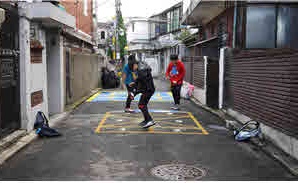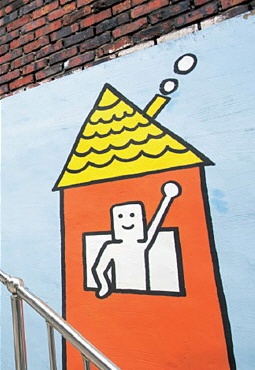
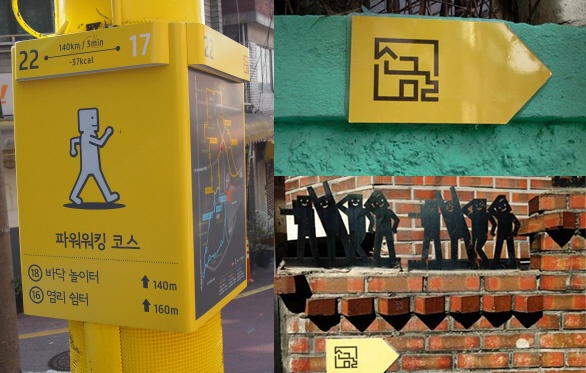
Feeling safer by making your neighbourhood better : the Salt Road Project from Seoul City
Between 1960 and 2000 Seoul's population skyrocketed from fewer than three million to ten million, and South Korea went from being one of the world's poorest countries to being richer than the European Union average (in terms of GDP per capita based on purchase power parity). Rapid urbanization and economic growth, however, was accompanied a host of serious social issues, including a dissolving sense of community, increasing crime rates and a growing wealth gap. ‘Safety from crime’ became an important issue for Seoul city to address.
Reducing social costs through the application of crime prevention through environmental design
According to a study by the Korean Institute of Criminology, theft and violence are two of the most common criminal offenses in Korea. The study also showed that most of these crimes are triggered by environmental factors brought on by poor physical surroundings. The study reported that 62 per cent of these two crime categories take place on streets and other public places. Which means that if the poor environmental conditions of public places improve, not only would the rates of the two major crime types fall, but also about an amount of £1.2 billion would be saved every year, an estimated social cost inflicted by crime on Korean society as a whole.
The City of Seoul has analysed these ongoing issues facing its municipal departments and strived to effectively deal with them through the application of environmental design.
In 2012 Seoul launched a program to prevent crimes through environmental design. The program is now deeply embedded with urban planning projects including crime prevention design of apartment complexes, schools, and old towns; installation of LED street lights and graphic arts on streets and so on.
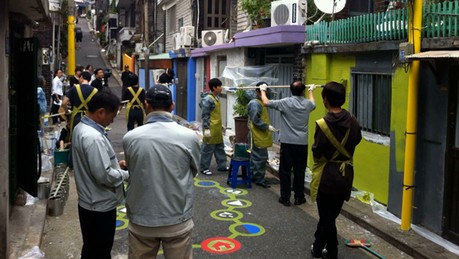
The first application of envionmental design to an old town in Seoul: the Sogum Gil project
To give you a brief example of the Crime Prevention Through Environmental Design (CPTED) program, let me introduce Sogum Gil (Salt Road), the first pilot of the program.
Let's see how Seoul City has turned old and deprived area, Sogum Gil (Salt Road) into an safe and lovely neighbourhood with well-organized communities through applying environmental design to crime prevention.
Yellow Door House
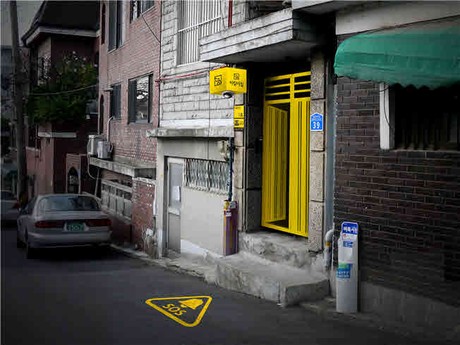
Six residents volunteered to become a Yellow Door House and allowed Seoul City to paint their front gate yellow, and install a CCTV and an emergency bell. The emergency bell is directly connected the nearest police office. Anyone can ring on the bell if they feel threatened or unsafe, and help wil be given.
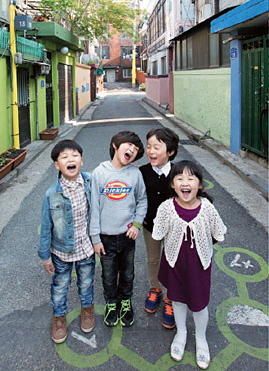
Street painting
Residents and volunteers have painted the walls brightly and have drawn street game drawings on the ground for children
Community maps and signs
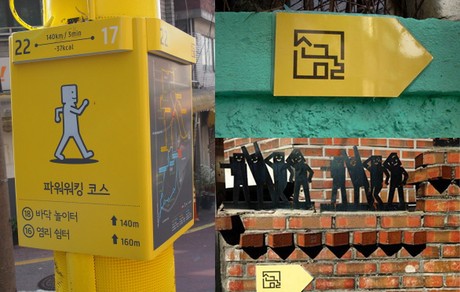
Community maps and signs will help you to never lose your way while you are walking on the Salt Road.
Community center Sogum Naru (Salt Quay)
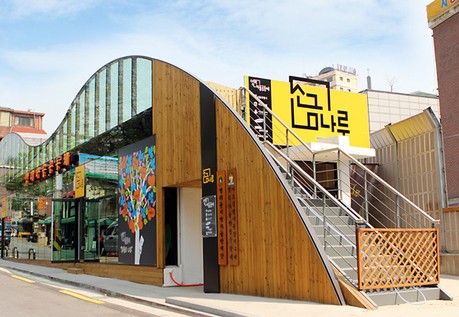
Seoul City has offered new community hub to community organization by remodelling an old water supply facility, as it believes that a well organized community is an essential factor to make a safe and attractive town.
What people have found
Residents have reported that they have become less afraid of crime and more proud of their neighbourhoods then before the Salt Road Project, according to the survey from Korea Institute of Criminology. Adults and children, attracted to the exercise equipment and the traditional street game diagrams marked on the pavement, have become “public eyes on the street.”
The Yeomni-dong area, which includes Salt Road, saw a drop in the number of crimes reported soon after the implementation of CPTED programs, Among households with children, the fear for their children has dropped more (13%) than the fear for themselves (9%). The level of satisfaction was particularly high among women, which was attributed to the remodeling of Salt Road.
The Korea Institute of Criminology surveyed residents in 2013 to figure out how they feel about Sogum Gil project, and the result shows that residents' fear of the possibility of street crime dropped by 9% and their attachment to the neighbourhood increased by 14% compared to the pre-program period. In addition, the 79% believed that the program is effective in crime prevention and 83% are satisfied with the project.
Lessons: cooperation among crucial sectors
Sogum Gil project never could have been successful without cooperation among the three crucial sectors; community, government, and private companies.
Seoul City and communities planned the project together and Samsung and Nexen Korea sponsored a part of the cost. Samhwa Industrial presented all of the paint for community art.
The most important lesson which Seoul has learnt from the Sogum Gil project is the efficiency and power of collaboration among the important social sectors.
This blog was written by Youngwoo Jeon, who is working at Social Life as a secondee from Seoul Government.
If you need any further information, please don’t hesitate to contact Youngwoo on ainsof16@gmail.com.
Adults and children, attracted to the exercise equipment and the traditional street game diagrams marked on the pavement, have become “public eyes on the street.”
